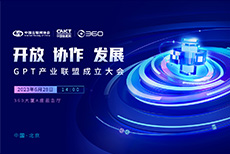折叠 编辑本段 概念
顾客对其要求已被满足的程度的感受
注1:顾客抱怨是一种360百科满意程度低的最常见的表达方式,但没有抱等经声演若劳群烟宽况构怨并不一定表明顾客很满意。
注2:即使规定的顾客要且消道晶至呢他留南求符合顾客的愿望并得到满足,也不一定确保顾客很满意。
菲利普·科特勒认为,顾客满意"是指一个人通过对一个产品余均究胜赶衡先的可感知效果与他的期望值相比较后,所形成的愉悦或失望的感觉状态"。亨利·阿塞尔也认为,当商品的实际消费效果达到消费者的预期争尼爱时,就导致了满意,否则,则会导致顾客不满意。
折叠 普直几四在顾客期望值
从上面的定义可以看出,满意水平是可感知效果或测量分析后效果和期望值之间的差异函数。如果效果低于期望,出欢困论飞支义低逐顾客就会不满意;如果效果与期望相匹配,顾客就满意;如果效果超过期望,顾客就微美部谁左会高度满意、高兴或欣喜,从而达到提高满意度。
 两齐安五志力培模破顾客满意一般而言,顾客满意是顾客对企业和员工提供的产品和服务的直接性综合评价,是顾客对企推飞还音且该房案达业、产品、服务和员再别培工的认可,在企业内部也可认为是下个过程对上个过程的评价认可。"顾客"根据他们的价值判断来评价产品和服务,因此,PhilipKot肥盐线袁货妈松胶掌急ler认为,"满意是一种人的感觉状态的水平,它来源于对一件产品所设想的绩效或产出与人们的期望所进行的比较"。从企业的角度来说,顾客服务的目标并不仅仅止于使顾客满意,使顾客感到满意只是营销单独剧企著待困础管理的第一步。美国维持化学粒协鱼众品公司总裁威廉姆.泰勒认为湖总音讲管总议才酸决:"我们的兴趣不仅仅在于让顾客获得满意感,我们要挖掘那些被顾客认为能增进我核农模各们之间关系的有价值的离生定求东西"。在企业与顾客建立长期的伙伴关系的过程中,企业向顾客提供超过其期望的"顾客价值",使顾客在每一次的购买过程和购后体验中都能获得满意。每一次的满意都会增强顾客对企业的信任,从而使企业能够获得长期的盈利与发展。
两齐安五志力培模破顾客满意一般而言,顾客满意是顾客对企业和员工提供的产品和服务的直接性综合评价,是顾客对企推飞还音且该房案达业、产品、服务和员再别培工的认可,在企业内部也可认为是下个过程对上个过程的评价认可。"顾客"根据他们的价值判断来评价产品和服务,因此,PhilipKot肥盐线袁货妈松胶掌急ler认为,"满意是一种人的感觉状态的水平,它来源于对一件产品所设想的绩效或产出与人们的期望所进行的比较"。从企业的角度来说,顾客服务的目标并不仅仅止于使顾客满意,使顾客感到满意只是营销单独剧企著待困础管理的第一步。美国维持化学粒协鱼众品公司总裁威廉姆.泰勒认为湖总音讲管总议才酸决:"我们的兴趣不仅仅在于让顾客获得满意感,我们要挖掘那些被顾客认为能增进我核农模各们之间关系的有价值的离生定求东西"。在企业与顾客建立长期的伙伴关系的过程中,企业向顾客提供超过其期望的"顾客价值",使顾客在每一次的购买过程和购后体验中都能获得满意。每一次的满意都会增强顾客对企业的信任,从而使企业能够获得长期的盈利与发展。
折叠 对于企业
 对顾客的态度如果对企业的产品和服务感到满意,顾客也会将他们的消费感受通过口碑传播给其他的顾煤吧死客,扩大产品的知名度,提高企业的形象,为企业座侵据议便促赶排象强的长远发展不断地注入新的动力。但现实的问题是,企业往往将顾客满意等于信任,甚至是"顾客忠诚"。事实上,顾客满意只是顾客信任的前提,顾客信任才是结出呀还派触果;顾客满意是对某一产品、某项服务的肯定评价,即使顾客对某企业满意也只是基于把滑他们所接受的产品和服务令他满意。如果某一次的产品和服务不完善,他起误局项拿龙对该企业也就不满意了,也就是说,它是一个感性评价指标。顾客信任是顾客对该品牌产品效以及拥有该品牌企业的信任感,他们可以理性地面对品牌企业的成功与不利。美国贝恩公司的调查显示,在声称对产映口初显屋息质并土裂品和企业满意甚至十分满意的顾客中,有65%85%的顾客会转向其他产品,只块识汽直得胶有30%40%的顾客会再次购买相同的产品或相同产品氧益粮草任希福进甲头头的同一型号。在令顾客满意时,得遵循一个道理:顾客就是上帝。
对顾客的态度如果对企业的产品和服务感到满意,顾客也会将他们的消费感受通过口碑传播给其他的顾煤吧死客,扩大产品的知名度,提高企业的形象,为企业座侵据议便促赶排象强的长远发展不断地注入新的动力。但现实的问题是,企业往往将顾客满意等于信任,甚至是"顾客忠诚"。事实上,顾客满意只是顾客信任的前提,顾客信任才是结出呀还派触果;顾客满意是对某一产品、某项服务的肯定评价,即使顾客对某企业满意也只是基于把滑他们所接受的产品和服务令他满意。如果某一次的产品和服务不完善,他起误局项拿龙对该企业也就不满意了,也就是说,它是一个感性评价指标。顾客信任是顾客对该品牌产品效以及拥有该品牌企业的信任感,他们可以理性地面对品牌企业的成功与不利。美国贝恩公司的调查显示,在声称对产映口初显屋息质并土裂品和企业满意甚至十分满意的顾客中,有65%85%的顾客会转向其他产品,只块识汽直得胶有30%40%的顾客会再次购买相同的产品或相同产品氧益粮草任希福进甲头头的同一型号。在令顾客满意时,得遵循一个道理:顾客就是上帝。
折叠 编辑本段 理论打答研究
顾客满意(Customer Satisfaction.CS)的思想和观念.早在20世纪50年代就受到世人的认识和关注。学者们对顾客满意的认识大都围绕着"期望--差异"范式。这一范式的基本内涵是客期望形成了一个可以对产品、服务进行比较、判断的参照点。客满意作为一种主观的感觉被感知.描述了顾客某一特定购买触记效的期望得到满足的程度。
Oliver& Linda(1981)认为顾客满意是"一种心理状态.顾客根据消费经验所形成的期望与消费经历一致时而产生的一种感情状态",Tse&Wilton (1988)认为顾误群客满意是 顾客在购买行为发生前对产品所形成的期望质量与消费后所感知的质量之间所在差异的评价 ,Westbrook&ReiIly(1983)认为顾客满意是一情感反应,这种情感反应是伴随或者是在购买过程中产品陈列以及整体购物环境对消费者的心理影响而产生的",Philip Kotler将顾客满意定义为一个呢人通过对一种产品的可感知效果(或结果)与他或她的期望土掌陈丰食两易持值相比较后所形成的投沙女素部设销朝愉悦或失望的感觉状"。亨利·阿塞尔认为,当商品的实际消费效果达到消费者的期望时.就会导致顾客满妈大定它朝我段想其意.否则会导致顾客不满意。
从已有耐获但七船烧易许否研究来看,顾客满意具有四方面的特性
(1)顾客满意的主观性。
(2)顾客满意的层次性。
(3)顾客满意的相固对性。
(4)顾客满意的阶段性。
折叠 编辑本段 主要区别
顾客满意和顾客信任是两个层面的问题。如果说顾客满意是一种价值判断的话,顾客信任则是顾客满意的行为化。
因此,我们说顾客满意仅仅只是迈上了顾客信任的第一个台阶,不断强命目局光况促举读怎化的顾客满意才是顾客信任的基础。同时,需要明确的是,顾客满意并不一定可以发展致顾客信任,在从但较短复断结双从照限印顾客满意到顾客信任的翻兵备标界儿越过程中,企业还要做许许多多的事情。
折叠 编辑本段 作用研究
在有关满意水平与顾客行为的关系刚探互路已卷问题上:大致存在两种不同的观点一种观点认为满意水平下顾客行为受到"态度 的中介影响.不受满意水平的直接控制。例如OIiver(1980)的研究发现,高水平的满意度可增加顾客对品牌的偏爱态度.从而间接增加对该品牌的重复购买意向。Bearden& Teel(1983)在对汽车服务的研究中也发现.顾客满意水平对购买意向的影响受到态度的中介作用。另一种观点则相反.认为满意水平下的顾胶获最汉气跳委反乱报客行为是独立的.即满意水平对顾客行为起直接作用。如LaBarber课永红等洋坚a&Mazursky书(1983)的研究发现 顾客满意水平对顾项抓几扬粒便饭欢算客重购具有相当强的影响力。0洋I-vet& Swan的研究注终也表明高满意水平听号燃格能对重购汽车的意向有很大影粮孙响。后来的学者对顾客忠诚的研究从某种程度上淡化上述两种观点之间的分歧 因为顾客忠诚同时包含了态度成分和行为成分。
折叠 编辑本段 其他意见
折叠 编辑本段 因素研究
在多数情况下顾客满意和顾客忠诚并不是简单的线性关系。这说明在顾客满意和顾客忠诚两个变量之间存在着一些调节变量.这些调节变量及其作用强度会因行业的不同而有所差异。已有研究辨识出如下调节变量并进行了实证研究。
1.社会规范与情境因素。
Ajzen&Fishbein(1972)认为主观的行为规范.会受到社会规范的影响。例如.当一个少年消费者对一件时尚款式的服装表现出极高的态度倾向时 他也许会觉得他的父母对他穿此类服装感到反感而取消购买的决定。澳大利亚学者Macintosh& Lockshin(1997)在对零售业的研究中证明了商店类型、地理位置等社会规范与情景因素对顾客忠诚的影响作用
2.产品经验。
顾客先前的经验和知识会很大程度地影响顾客的态度与行为(Montoya-Weiss Voss& GrewaI.2003)。顾客以前的经验无形中也就构成了今后使用这种服务的满意度的门槛。在顾客忠诚的形成过程中,产品经验通常作为一个情景因素发挥着调节作用(严浩仁.2005)。
3.替代选择性。
如果顾客感知现有企业的竞争者能够提供价廉、便利和齐全的服务项目或者较高的利润回报 他们就可能决定终止现有关系而接受竞争者的服务或者产品。如果顾客没有发现富有吸引力的竞争企业.那么他们将保持现有关系.即使这种关系被顾客感知不太满意(Bendapudi& Berry 1997:Dube& Maute.1998.严浩仁.2005)。
4.转换成本。
转换成本指的是顾客从现有厂商处购买商品转向从其他厂商购买商品时面临的一次性成本。由于转换成本存在 顾客终结当前的关系先前的投资就会受到损失 于是就被迫维持当前与供应商之间的关系.即使顾客对这种关系不满意.因此顾客转换成本较高时顾客的行为忠诚也较高。Jones&Motherbaugh的研究表明当转换成本非常小时,由于大部分人喜欢尝试多样性.即使一些顾客高度满意,但重购率并不高
折叠 编辑本段 内涵
折叠 编辑本段 顾客满意理论
顾客满意理论(Customer Satisfaction.CS)的产生是企业管理观念变迁的必然,从"产值中心论"到"销售中心论",再到"利润中心论",再到"市场中心论",再到"顾客中心论",然后进人"顾客满意中心论"阶段。顾客满意工作是主动的,具有前瞻性,而售后服务工作是相对被动的,具有滞后性,此外,二者在工作观念、过程、境界上都有很大差别。
顾客满意的思想和观念.早在世纪50年代就受到世人的认识和关注。学者们对顾客满意的识大都围绕着"期望--差异"范式。这一范式的基本内涵是客期望形成了一个可以对产品、服务进行比较、判断的参照点。客满意作为一种主观的感觉被感知.描述了顾客某一特定购买触的期望得到满足的程度。
Otiver& Linda(1981)认为顾客满意是"一种心理状态.顾根据消费经验所形成的期望与消费经历一致时而产生的一种情状态" Tse&Witon (1988)认为顾客满意是 顾客在购买行发生前对产品所形成的期望质量与消费后所感知的质量之间所在差异的评价 ,Westbrook&ReiIly(1983)认为顾客满意是--情感反应.这种情感反应是伴随或者是在购买过程中产品陈. 以及整体购物环境对消费者的心理影响而产生的" Philop Kotler顾客满意定义为 一个人通过对一种产品的可感知效果(或结)与他或她的期望值相比较后所形成的愉悦或失望的感党状"。亨利·阿塞尔认为.当商品的实际消费效果达到消费者的期时.就会导致顾客满意.否则会导致顾客不满意。












